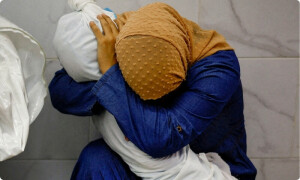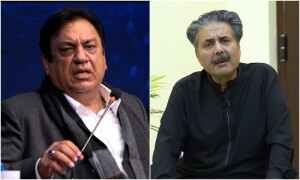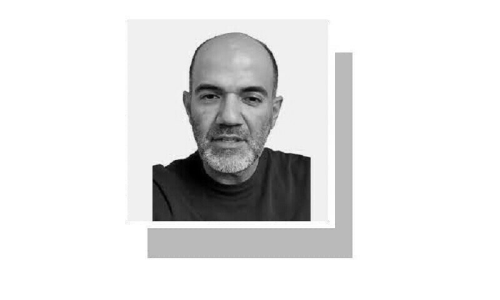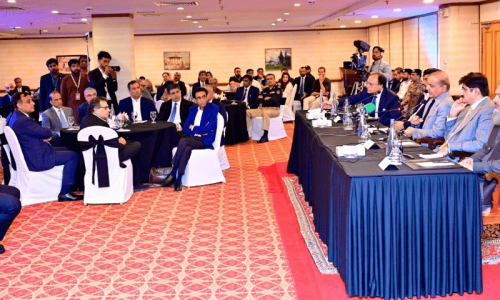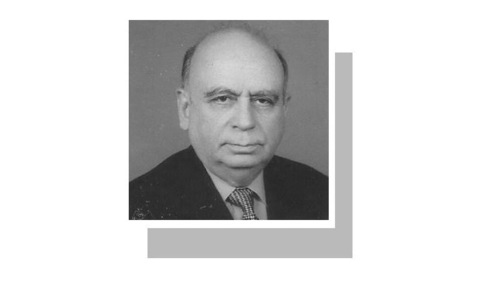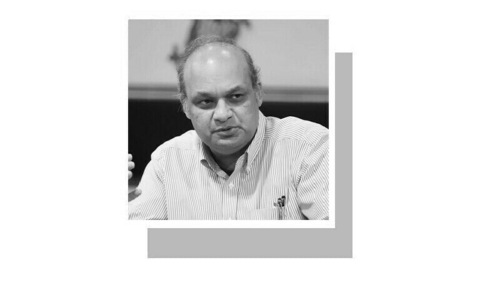RAGGED with exhaustion and grief, Indira was unaware that someone was taking a picture of her sprawled helplessly on the beach next to the body of her sister-in-law Maheswari ten years ago. For three days she had stumbled through the rubble left by the tsunami that hit the Tamil Nadu coast in December 2004.
Off shore, bodies occasionally floated by. Many of them were children. Her own three had survived but she had been away at the market well inland and endured a day and night of agony until she found them.
With them safe, she had set out to find other family members. Maheswari’s body was already decomposing by the time Indira located it and collapsed on the beach, wailing with grief, banging her forehead on the hard wet sand near the young woman’s outstretched hand.
Today, Indira owns a cement house in her own name, thanks to the government’s massive effort to provide proper housing for hundreds of thousands who had been living in vulnerable clay and thatch houses on that awful day on the disaster-prone coast which was also battered in 2011 by Cyclone Thane. It is a big improvement over the flimsy dwelling that was partially damaged in the tsunami that destroyed most of her few possessions.
South of Pondicherry, down Tamil Nadu states fabled Coromandel Coast from Cuddalore to Nagapattinam, fishing villages that were on the shore, and were struck by the tsunami, were wiped out. Over 18,000 people died on the coast; the fishing communities were the worst hit.
Tens of thousands of houses have been built for those who lost their homes, mostly in places further from the shore. Up to 80,00 boats were damaged and destroyed and new ones given to all of their owners.
But in some of these communities there remains a sense of dislocation. The tsunami altered not just this region’s physical contours, but its social and psychological landscape too.
Money poured in — from aid organisations, the government, the UN, the World Bank, the Asian Development Bank, and an array of NGOs — and it brought relief and hope. Today the spinoffs continue. One remote rural school in Nambikkai in Cuddalore district for example, set up for tsunami orphans with Italian aid, now provides schooling for orphans in general, as well as children from dysfunctional families. Girls, who once routinely dropped out of school on reaching puberty, stay in longer today. Some are training to become nurses.
But there are exceptions. In many communities the aid and rebuilding has not addressed fundamental problems. For example, in some places ground water became saline; in one resettled village, residents have to pay two Indian rupees for a five-litre container of fresh water from a private water truck.
The state government is trying to eliminate the factors that contribute to making disasters worse, Mr Suresh Kumar, the District Collector of Cuddalore. He said: “We are converting more and more temporary houses into full-fledged houses; we are in the process of constructing 80,000 such houses.”
“The government played an excellent role,” says Arul Selvam, an independent environmental and social activist who helped coordinate rescue and relief efforts after the tsunami. But the trauma still runs deep, he says. “Usually when you lose a family member it is a big loss. In some families several were killed. How do you fill the void?”
C. Malarvannan, another Cuddalore-based activist who trains village teams in disaster response, says, “The tsunami left many mentally disabled. Children saw their parents die. Old people saw their children die.”
The avalanche of money has also changed people, say activists, some of whom view aid organisations with scepticism, working closely with communities. At the shrine of the Sufi saint Hazrat Shahul Hamid at Nagore in Nagapattinam district, Abdul Hamid Sahib showed me the mass grave of some 400 tsunami victims of all faiths. “Money poured in,” he says. “It was eaten up by people who were helping the tsunami victims. The survivors paid the price for their prosperity.
They got houses, and 100,000 Indian rupees from the government. But who prospered and who did not, is up to that person’s capabilities.”
While communities once were together, some have been split up by the relocation and re-housing projects. The coast between Pondicherry and Nagapattinam is now pocked with the soaring towers of heavy industries under construction.
The districts of Cuddalore and Nagapattinam are considered “backward” and the state government wants to industrialise and create jobs.
In Cuddalore, Indira speaks volubly for two hours about her memories, her life and her own travails. Her two daughters are married, and her brother is able to help her only occasionally. Her son, now 18, is out fishing all night and does little to help her, she says. Fainting spells led her to give up cooking food for a pavement stall she used to run. She is just 42, she estimates, but already in failing health; her left foot hurts, and she has to hobble. From the bare, stained and pitted concrete walls, the cardboard that serves as a blind in the window, the absence of a fridge, it is obvious she lives virtually hand to mouth.
Under a government programme for female heads of households who do not have support — usually that is a man — she was granted a monthly pension of 1,000 Indian rupees last year, but claims the payouts stopped after six months and she is trying to find out why.
—By arrangement with The Straits Times-Asia News Network
Published in Dawn, December 27th, 2014







